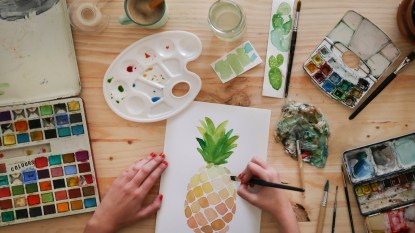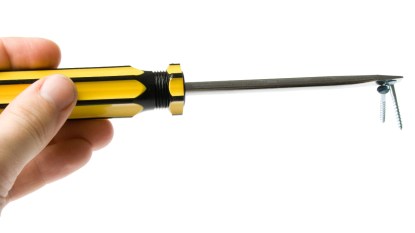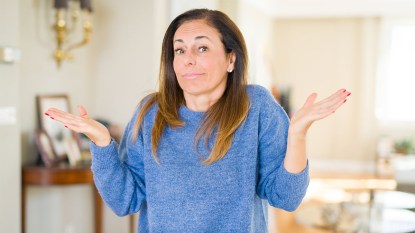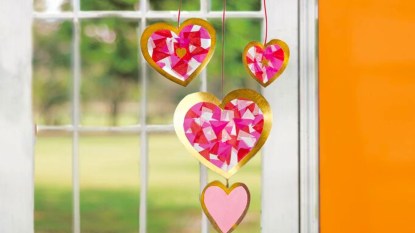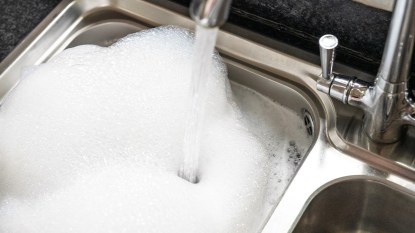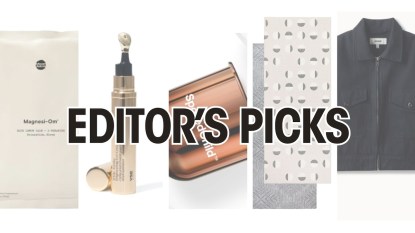Does Blue Calm You? Yellow Spark Joy? Here’s How Much (and Why) Your Home Color Affects Your Mood
Color your world.
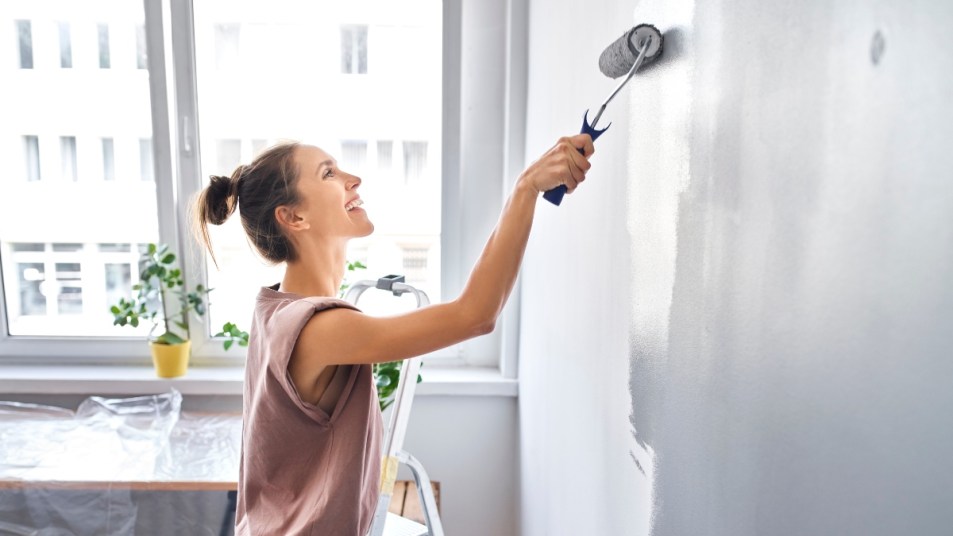
Your home is your sanctuary. While some think of interior design as simply a matter of what looks pretty where, a growing field, called “color psychology,” suggests that the hues you choose for your home can actually influence how you feel.
In fact, there’s a field of study dedicated to what shades evoke what kind of emotional response, says Sally Augustin, PhD, psychologist and author of three books, including Designology, on color psychology. Some hues make you feel good, some may make you feel not so good. But no doubt, they can have a powerful effect over your body and mind, she says.
How Hues Affect Your Mood
Where do you start if you want to incorporate color in your home to elevate your mood or calm you down? First, think about how a certain hue makes you feel. Cool shades on the blue side of the spectrum, like blues, greens, and purples, tend to be calming and tranquil, so all are excellent choices in a bedroom or reading nook. “There are common denominators in blues and greens, in large part because they’re derived from nature and most people can report positive experiences outdoors,” says Leatrice Eiseman, director of the Eiseman Center for Color Information and Training and the Pantone Color Institute, and author of The Complete Color Harmony: Pantone Edition.
Think of a blue sky, a green meadow, and purple flowers. They tend to make you feel calm, warm, and soothed. If invigorating is what you’re after — say, for a playroom, home gym, or space for entertaining — consider red, orange, or yellow. These warm, vibrant shades arouse more excited emotions. “Think about how mesmerizing it is to look at fire,” says Eiseman.
Silver is a good accent shade to add richness and elegance to a living or dining room. When you think of silver, you instinctively envision wealth and prosperity. Black can add sophistication and drama to a room. Too much black may be depressing, so it’s best to use it as an accent. For a youthful, clean, refreshing feel, try adding white to a room.
The Impact of Your Personal History
Of course, these rules don’t necessarily apply across the board. Hues evoke different things in different people, depending on their personal history and, frankly, their taste. A calming shade to you might incite friction in someone else. You may find white stimulating, while someone else may find it yawn-inducing boring.
And if you grew up with certain ideas about a color, those beliefs may never leave you. If you
were taught that orange isn’t sophisticated, you probably won’t get a good feeling in a tangerine room. “It’s hard to change those feelings,” says Eiseman.
To determine how different hues make you feel, sit down with a number of colors. Which ones excite you? Do certain colors bore you? Which are calming? No matter what the books say, it’s all up to you. “Some of it is learned behavior,” says Eiseman. Green is evocative of nature, so it’s generally soothing, but if you fell out of a tree as a child, it might not be to you. “In the end, you have to figure out what makes you happy,” she adds.
When you’re rethinking your home’s decor — whether it’s swapping out throw pillows or painting the bedroom walls a new hue — it’s crucial to sit back and consider your reactions to different hues. What slows down your heartbeat? What gets you energized and pumped? Once you’ve answered those questions, you can start choosing what colors will work for you.
The Impact of Paint Colors
Creating the perfect space for you and your family within your home starts with the basics: paint. The color you choose has the power to cultivate a specific vibe or feeling. Here are a few examples:
Bright yellow evokes a vacation vibe.
Kelly Heath looked to her surroundings to inspire her palette when redesigning her family’s second home in Orlando, Florida — where they quarantined during most of 2020. “We had purchased this house fully furnished and it was very dark with a lot of reds and blacks and it felt very oppressive,” says Heath. “I knew I wanted to take it in the opposite direction and really lighten it up.”
She painted the kitchen cabinets a bright yellow (Annie Sloan Chalk Paint’s Old English Yellow). “I wanted to reflect the bright Florida sunshine and bring some of it inside, and for anyone visiting to immediately feel like it was light and airy, like they were on vacation. Since it is a second home, I felt like I could make a bold color choice and wanted to bring in something happy and full of energy,” she says.
Burnt orange adds a cheerful touch.
Meredith Smith of Fresno, California, yearned to “warm up” her home last summer, which is why she painted one wall of the kitchen burnt orange (Valspar’s Copper Hide), accenting it with floating shelves. “Before, I was very much about cool tones,” she says. “In 2020 my entire taste changed. I started with this swatch of color on my kitchen wall. It makes me so happy to see when I come downstairs in the morning.”
Blue-gray makes for a happy home.
At the height of the pandemic, Jessie Moffat, a design enthusiast in Milwaukee, knew she needed to shake up her home. The living room’s khaki-colored walls were a carryover from previous owners, but were never her preferred shade. Before consulting paint chips, however, she scanned her home for ideas and hit upon the cover of a beloved book that seemed the perfect hue. “I literally took it to the paint store with me as I looked at samples,” says Moffat, who decided on Sherwin-Williams Reflecting Pool, a 2019 Color of the Year. “Now, the walls are much brighter and happier, a better reflection of me,” says Moffat. “The bold retro color fits my joyful midcentury modern aesthetic.”
Setting the Mood
Hues can have a decided influence on your emotions. When picking a shade, it’s important
to think about how you plan to use the space you’re creating, and what colors will contribute to that objective. Christa O’Leary, designer, therapist and the founder and CEO of Home in Harmony Lifestyle, explains how different shades can affect the vibe of a room:
Blues
Hues from baby blue to navy have a cooling effect on the body and a calming influence on the mind. They also bring clarity and focus to a person’s thinking. But it’s not the best color to use if you have issues with depression, since it can heighten feelings of loneliness and sadness (“the blues”).
Red
This fiery shade is the universal color of passion. It also stimulates hunger and conversation, but it can also have a tendency to agitate some people.
Earth Tones
Hues such as tan, taupe, and brown have a grounding effect on the mind and body. They convey a sense of stability and permanence, but they aren’t the best colors to use if you suffer from low energy.
Yellow
This intense, sunny hue is energizing and uplifting. It can help encourage communication and mental sharpness.
Green
It’s the color of nature and helps support feelings of balance, healing, and freshness. Like blue, it also has a calming effect.
White
A common choice, it tends to be associated with innocence and cleanliness. For some, it has cold, sterile connotations. Adding texture and/or patterns can help infuse interest and warmth to whites, off-whites, and other light-toned neutral spaces.
A version of this article appeared in our partner magazine Mindfulness for Women in 2021.


